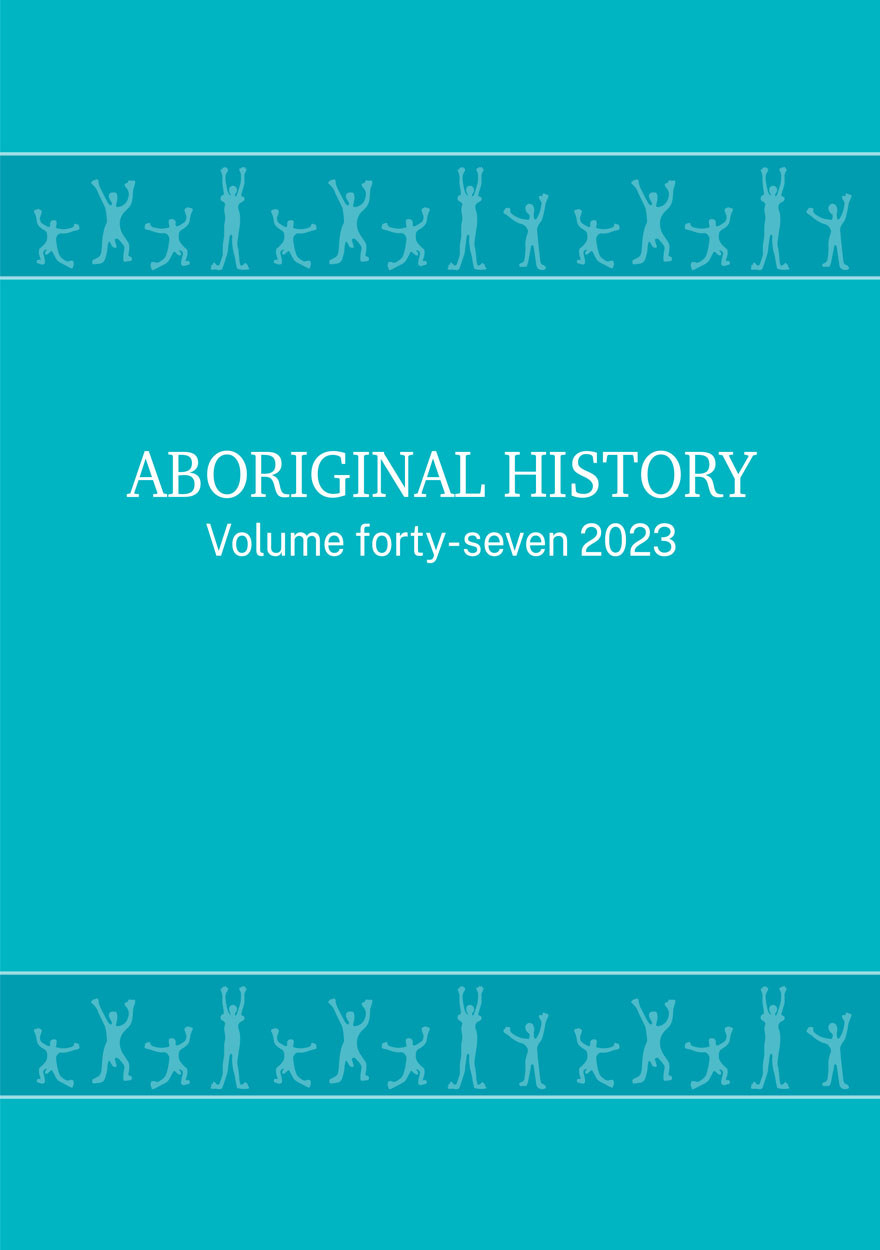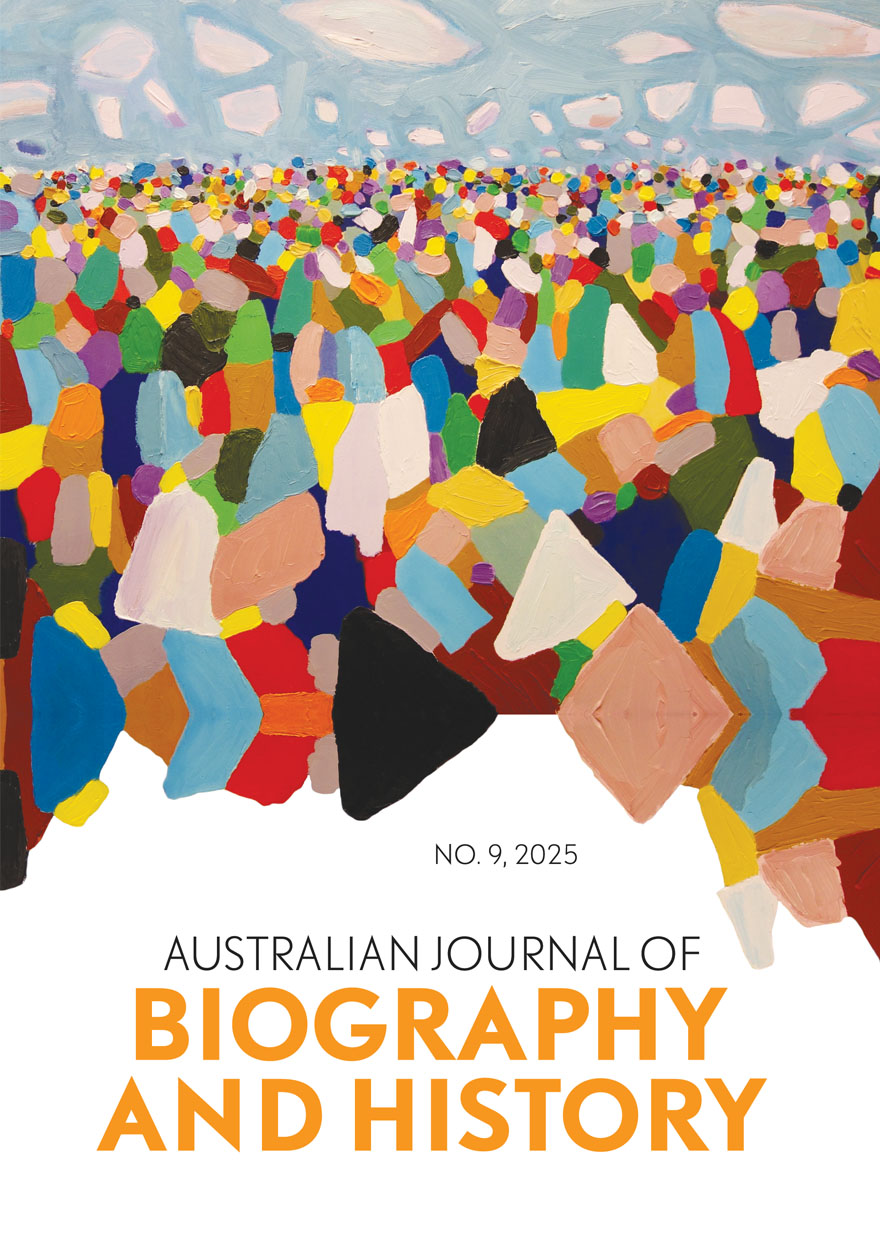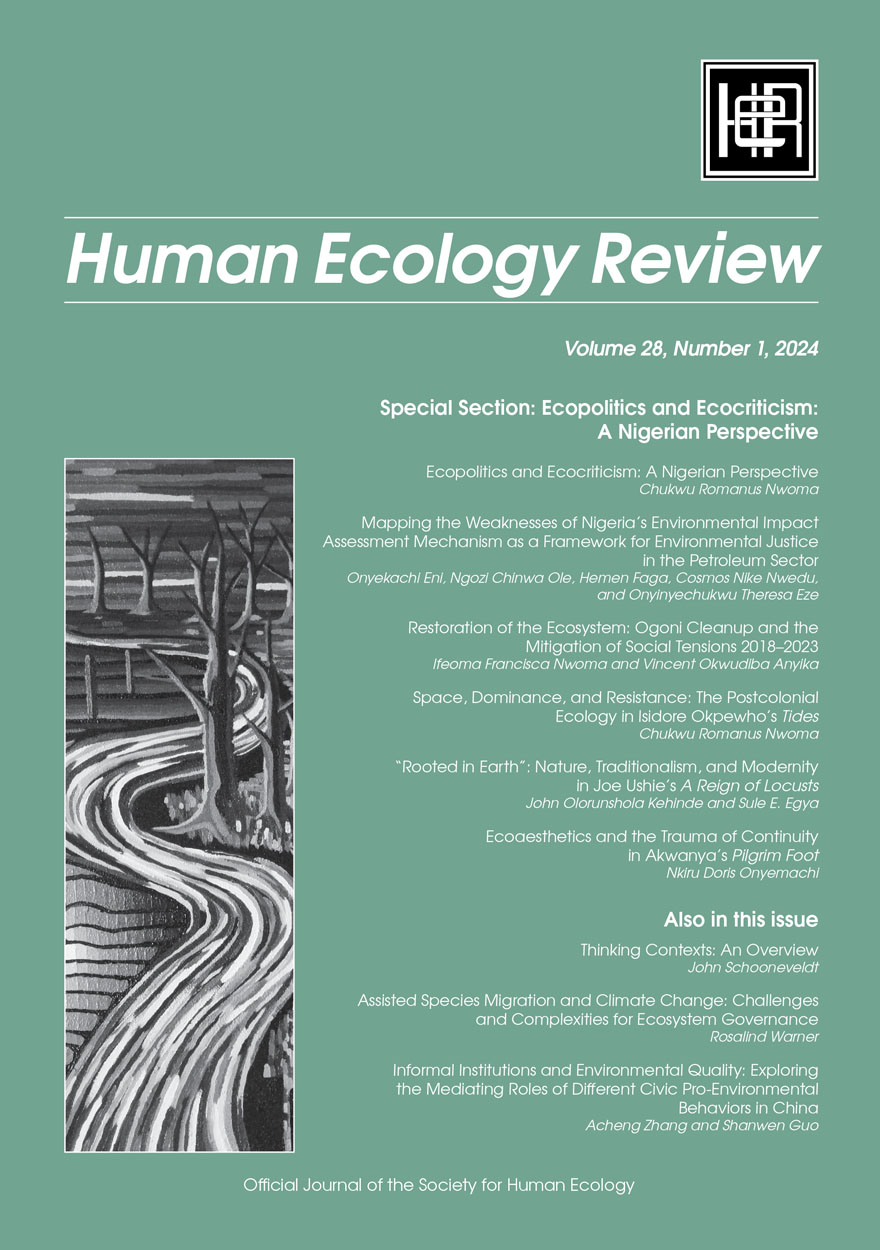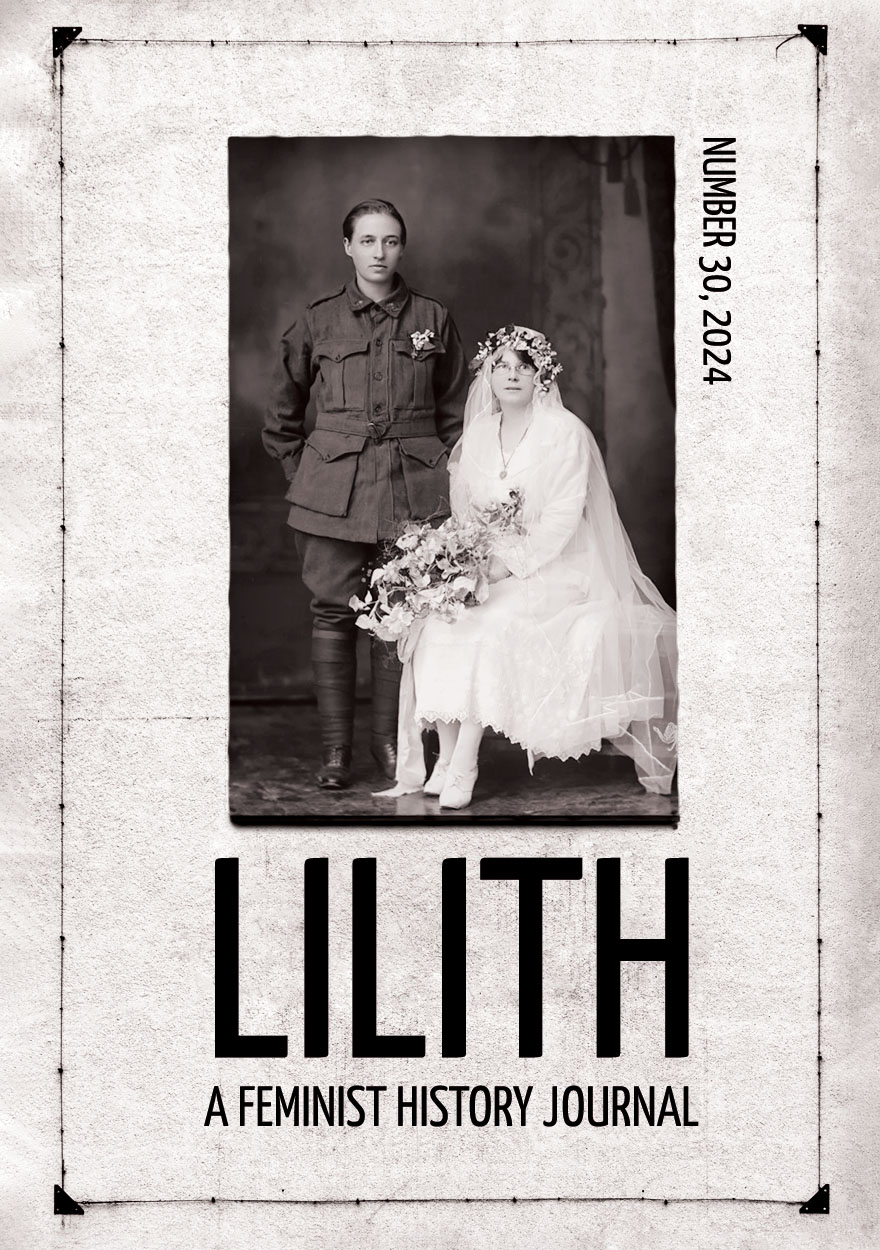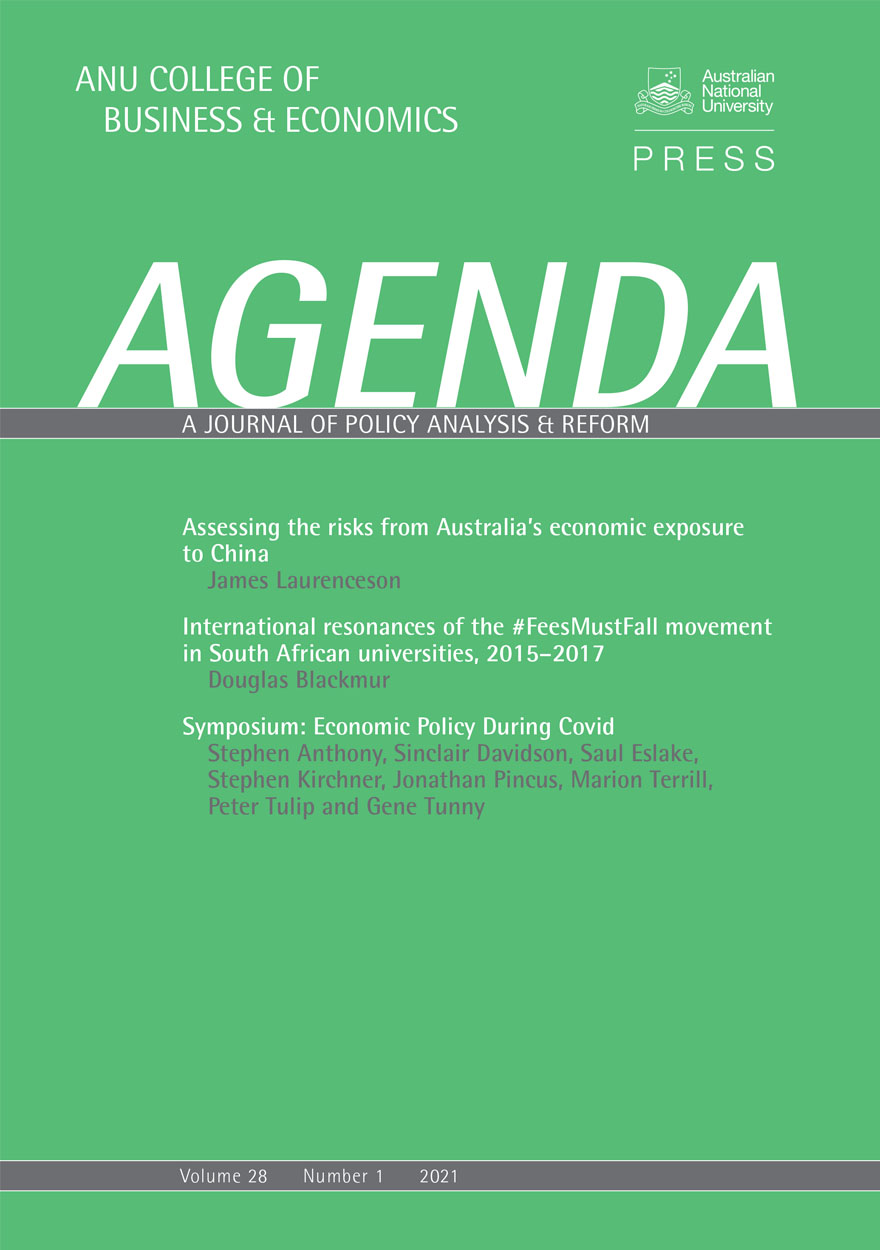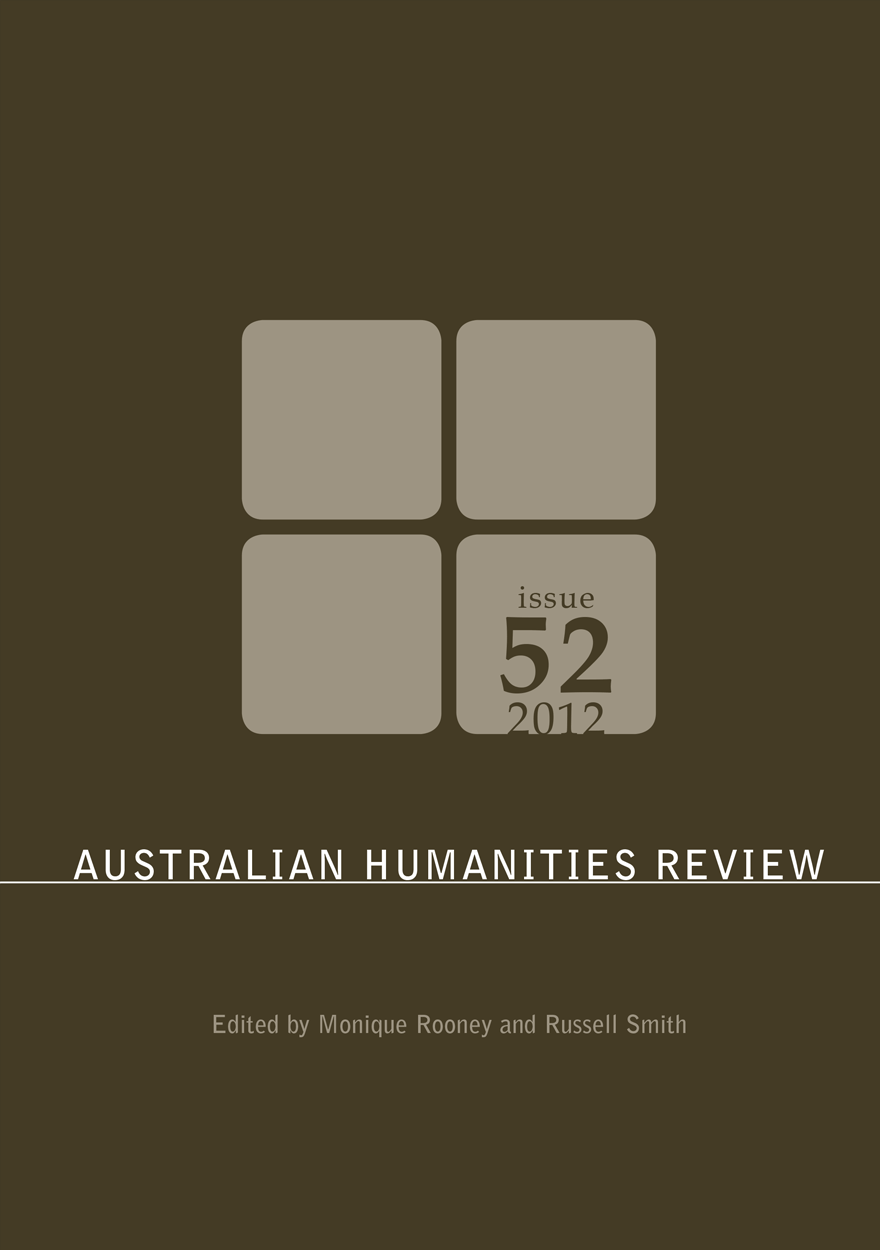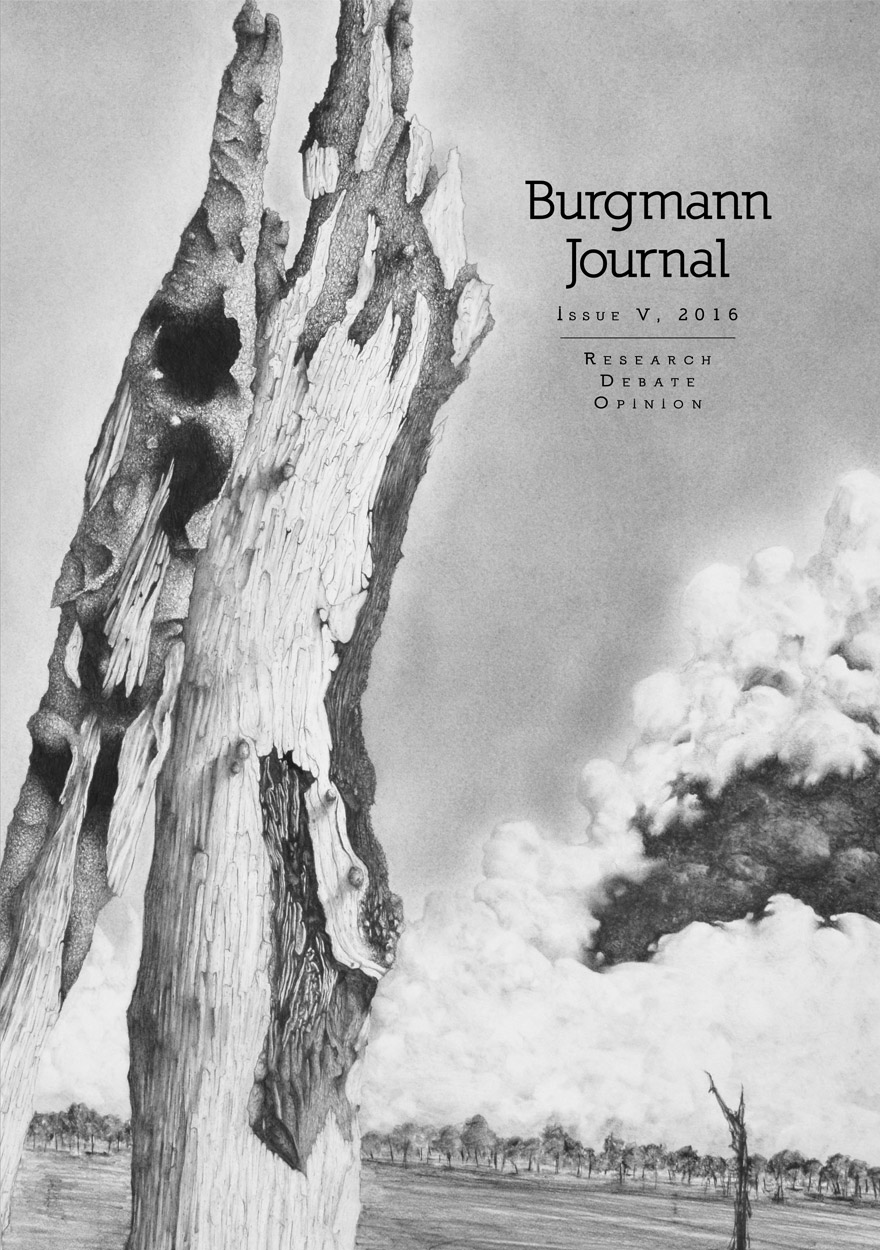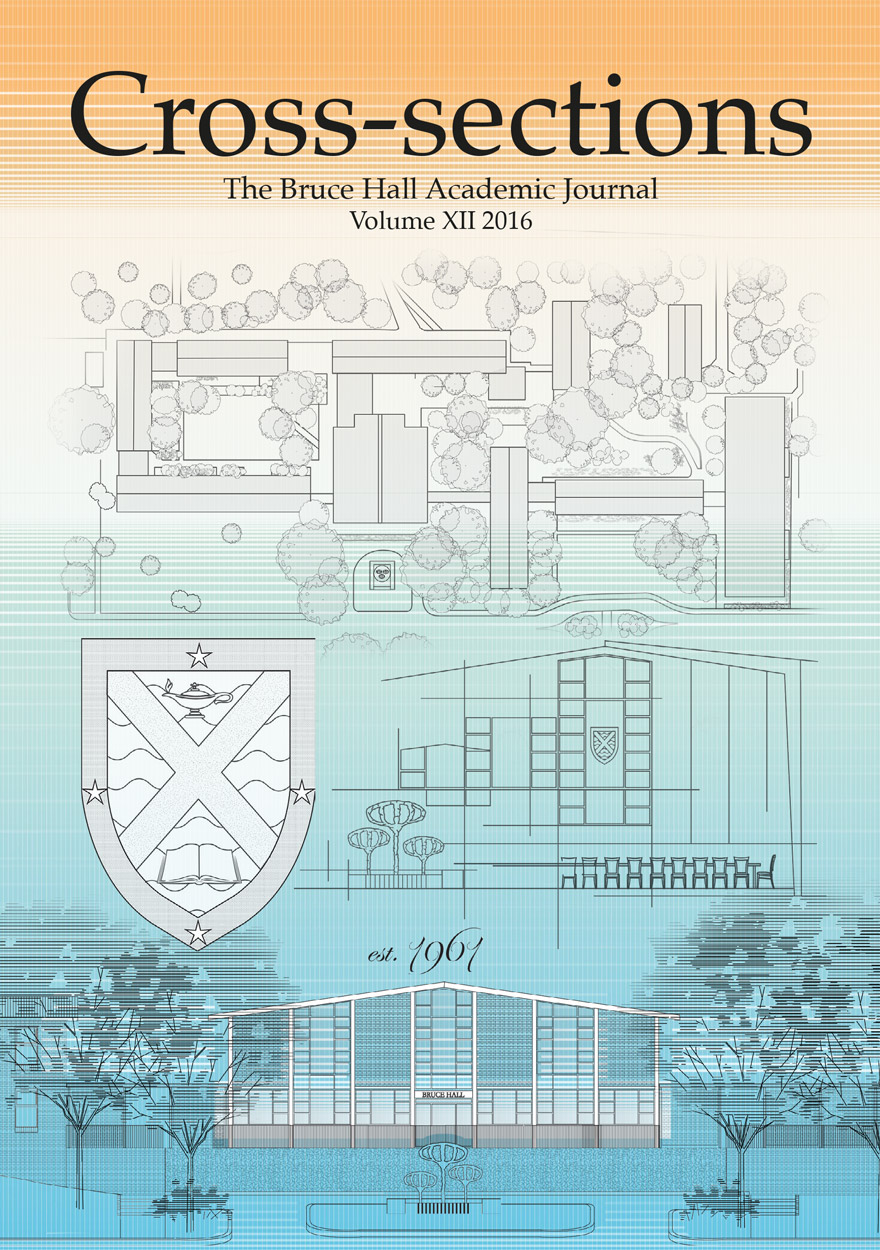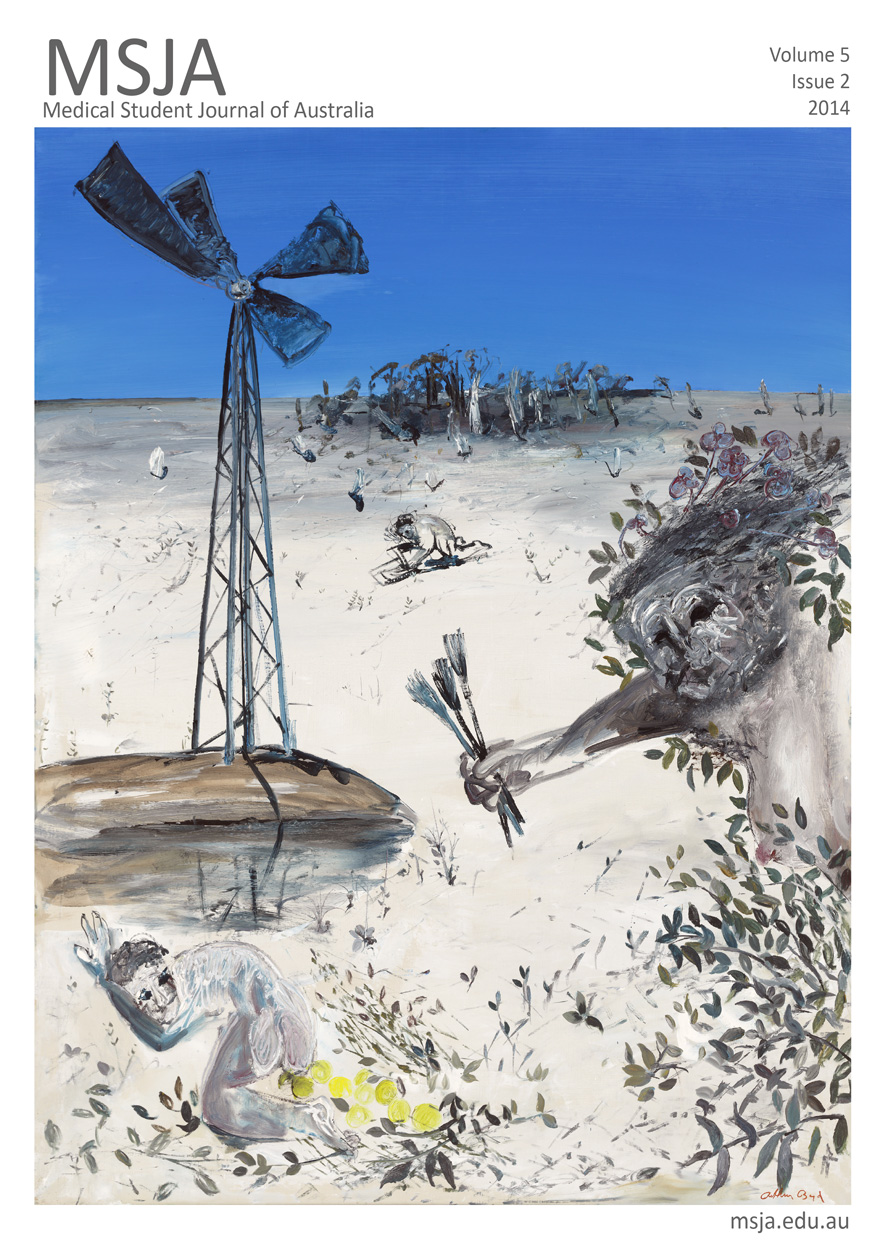Journals
Browse or search a variety of academic journals maintained by ANU Press, or find out more about the journal authors. Download the book for free or buy a print-on-demand copy.

Japan at War and Peace »
Shidehara Kijūrō and the Making of Modern Diplomacy
Authored by: Ryuji Hattori
Publication date: December 2021
The question of how to maintain the continuity of diplomacy while developing democracy without military intervention is an old and new issue. The challenge can be described as a dilemma between democracy and diplomatic coherence. This dilemma is not unique to the twenty-first century; it has been a constant challenge to the development of democracy. In non-Western countries, democratisation originated in the nineteenth century and has had many successes and failures. After the Russo-Japanese War, political parties began to take power in Japan.
The best embodiment of diplomacy in Japan’s emerging democracy—the development of parliamentary democracy and mass-based democracy—is Shidehara Kijūrō (1872–1951), who served as foreign minister from 1924 to 1927 and from 1929 to 1931, and was prime minister from 1945 to 1946. As a diplomat from the Ministry of Foreign Affairs, Shidehara had long grappled with the issue of how to ensure diplomatic coherence in modern Japan, which was becoming increasingly democratic. Although Shidehara succeeded to some extent in promoting diplomacy in cooperation with the US and the UK under party politics, the rise of the military after the Manchurian Incident forced him to retire for a period. However, after the Pacific War, Shidehara became prime minister of the US-occupied Japan and attempted to restore cooperative diplomacy under party politics. Shidehara came to the conclusion that the way to achieve both democracy and diplomatic coherence was through nonpartisan diplomacy towards peace.
This book examines the tension between diplomacy and democracy, focusing on Shidehara’s life and exploring modern Japan’s footsteps. Shidehara was undoubtedly one of Japan’s most important diplomatic figures.

East Asia Forum Quarterly: Volume 13, Number 4, 2021 »
Publication date: December 2021
Surrounded by great powers, South Korea has weathered the upheaval of the COVID-19 pandemic in its own unique way. Aspirations for greater autonomy and self-reliance are also driving significant changes to Seoul’s political and security postures amid intensifying regional tensions, and serve as a backdrop as South Koreans elect their next president in early 2022. This East Asia Forum Quarterly examines how South Korea is confronting the big challenges of our time, including public health, green energy, political polarisation, minority rights, denuclearisation on the Korean Peninsula and the global rise of K-pop.
Download for free
Not available for purchase

Made in China Journal: Volume 6, Issue 2, 2021 »
Edited by: Ivan Franceschini, Nicholas Loubere
Publication date: December 2021
Since its announcement in 2013, the Belt and Road Initiative (BRI) has become the main lens through which both observers and stakeholders trace China’s global footprint. Whether cheered on as a new engine of economic development in a fraught and increasingly unequal world or frowned on as a masterplan through which the Chinese authorities are attempting to establish global hegemony, the infrastructure component of the BRI has become such an important frame in discussions of Global China that less tangible aspects that are not in its purview tend to be lost or overlooked. One of these neglected dimensions is China’s long history of international engagement aimed at building economic, political, social, and cultural ties in both the Global North and the Global South. Frequently, we tend to forget how the international presence of Chinese actors we are currently observing did not just happen overnight, but was built on decades of experience of China’s interaction with the rest of the world. In the belief that examining these historical precedents can help us shed light on both the continuities and the discontinuities in the practices of today and that only by digging into the dirt of history can we excavate the roots of the dynamics we are witnessing, this issue is dedicated to the ‘archaeologies of the BRI’.
Download for free
Not available for purchase

Fighting Australia’s Cold War »
The Nexus of Strategy and Operations in a Multipolar Asia, 1945–1965
Edited by: Peter Dean, Tristan Moss
Publication date: 2021
In the first two decades of the Cold War, Australia fought in three conflicts and prepared to fight in a possible wider conflagration in Southeast Asia and the Pacific. In Korea, Malaya and Borneo, Australian forces encountered new types of warfare, integrated new equipment and ideas, and were part of the longest continual overseas deployments in Australia’s history. Working closely with its allies, Australia also trained for a large conventional war in Southeast Asia, while a significant percentage of the defence force guarded the Papua New Guinea–Indonesian border. At home, the Defence organisation grappled with new threats and military expansion, while the Australian Security Intelligence Organisation defended the nation from domestic and foreign threats. This book examines this crucial part of Australia’s security history, so often overlooked as merely a precursor to the Vietnam War. It addresses key questions such as how did Australia achieve its security goals at home and in the region in this new Cold War environment? What were the experiences of the services, units and individuals serving in Southeast Asia? How did this period shape Australia’s defence for years to come?

Rote-Meto Comparative Dictionary »
Authored by: Owen Edwards
Publication date: November 2021
This comparative dictionary provides a bottom-up reconstruction of the Rote‑Meto languages of western Timor. Rote-Meto is one low-level Austronesian subgroup of eastern Indonesia/Timor-Leste. It contains 1,174 reconstructions to Proto-Rote-Meto (or a lower node) with supporting evidence from the modern Rote-Meto languages. These reconstructions are accompanied by information on how they relate to forms in other languages including Proto‑Malayo‑Polynesian etyma (where known) and/or out-comparisons to putative cognates in other languages of the region. The dictionary also contains two finder-lists: English to Rote-Meto, and Austronesian reconstructions with Rote-Meto reflexes. The dictionary is preceded by three introductory chapters. The first chapter contains a guide to using the dictionary as well as discussion of the data sources. The second chapter provides a short synchronic overview of the Rote-Meto langauges. The third chapter discusses the historical background of Rote-Meto. This includes sound correspondences, the internal subgrouping of the Rote-Meto family, and the position of Rote-Meto within Malayo-Polynesian more broadly.
Searchable electronic versions of the comparative dictionary are provided in two formats at http://hdl.handle.net/1885/251618. The first electronic version is a Lexique Pro export of the dictionary. The Lexique Pro file contains the same data and information in the book version of the dictionary, but does not contain the introductory chapters. See the "About Rote-Meto" tab of the Lexique Pro file for more information on this version of the dictionary. The second electronic version is a text file. It is formatted as a tab separated file and is intended to be read in spreadsheet format. This text file does not contain all the data and information in other versions of the Rote-Meto Comparative Dictionary and should be used in conjunction with these other versions. See the associated readme for more information on what data is included and excluded from that text file.

International Review of Environmental History: Volume 7, Issue 2, 2021 »
Edited by: James Beattie
Publication date: November 2021
The second issue of International Review of Environmental History for 2021 features contributions on limpets and global environmental history, US bird conservation, soyabean agriculture in South America, settler environmental change in Aotearoa New Zealand, woodlands, communities and ecologies in Australia, and irrigation and agriculture in Australia.
Download for free
Not available for purchase

The Genesis of a Policy »
Defining and Defending Australia's National Interest in the Asia-Pacific, 1921–57
Authored by: Honae Cuffe
Publication date: November 2021
The years 1921–57 marked a period of immense upheaval for Australia as the nation navigated economic crises, the threat of aggressive Japanese expansion and shifting power distributions with the world transitioning from British leadership to that of the US. This book offers a reassessment of Australia’s foreign policy origins and maturation during these tumultuous years. Successive Australian governments carefully observed these global and regional forces. The policy that developed in response was an integrated one—that is, one that sought to balance Australia’s particular geopolitical circumstances with great power relationships and, in assessing the value of these relationships, ensure that the nation’s trade, security and diplomatic interests were served.
Amid the economic and strategic uncertainty of the interwar years, the Australian government acknowledged the shifting power distributions in the global and Asia-Pacific orders and that neither the policies of Britain nor the US completely served the national interest. The nation, accordingly, sought to intervene within the policies of the great powers to ensure its particular interests were secured. This geopolitically informed, interventionist approach, which had its genesis in the 1930s, is traced throughout the 1940s and 1950s, highlighting Australia’s gradual and uneven transition from the British world order to that of the US and the frank assessments made about which relationship best served Australia’s interests.
The Genesis of a Policy identifies a comprehensive and pragmatic approach—albeit not always effectively executed—in Australian foreign policy tradition that has not been previously examined.

New Dimensions of Connectivity in the Asia-Pacific »
Edited by: Christopher Findlay, Somkiat Tangkitvanich
Publication date: November 2021
There is no bigger policy agenda in the East Asian region than connectivity. Costs of international connectivity are indeed falling, in the movement of goods, services, people and data, leading to greater flows, and to the reorganisation of business and the emergence of new forms of international transactions. There are second-round effects on productivity and growth, and on equity and inclusiveness. Participating in trade across borders involves significant set-up costs and, if these costs are lowered due to falling full costs of connectivity, more firms will participate, which is a driver of productivity growth and innovation at the firm level. Connectivity investments are linked to poverty reduction, since they reduce the costs of participating in markets.
This volume includes chapters on the consequences of changes in both physical and digital connectivity for trade, for the location of economic activity, for forms of doing business, the growth of e-commerce in particular, and for the delivery of new services, especially in the financial sector. A study of China’s Belt and Road Initiative (BRI) is also included. These studies are preceded by an assessment of the connectivity performance in the Asia-Pacific region and followed by a discussion of impediments to investment in projects that contribute to productivity. The collection as a whole provides the basis for a series of recommendations for regional cooperation.
The Pacific Trade and Development (PAFTAD) conference series has been at the forefront of analysing challenges facing the economies of East Asia and the Pacific since its first meeting in Tokyo in January 1968.

History Wars »
The Peter Ryan – Manning Clark Controversy
Authored by: Doug Munro
Publication date: October 2021
‘In 1993, Manning Clark came under severe (posthumous) attack in the pages of Quadrant by none other than Peter Ryan, who had published five of the six volumes of Clark’s epic A History of Australia. In applying what he called “an overdue axe to a tall poppy”, Ryan lambasted the History as “an imposition on Australian credulity” and declared its author a fraud, both as a historian and a person. This unprecedented public assault by a publisher on his best-selling author was a sensation at the time and remains lodged in the public memory. In History Wars, Doug Munro forensically examines the right and wrongs of Ryan’s allegations, concluding that Clark was more sinned against than sinning and that Ryan repeatedly misrepresented the situation. More than just telling a story, Munro places the Ryan-Clark controversy within the context of Australia’s History Wars. This book is an illuminating saga of that ongoing contest.’
— James Curran, University of Sydney
‘The Ryan-Clark controversy … speaks to the place of Manning Clark in Australia’s national imagination. Had Ryan taken his axe to another historian, it’s unlikely that we would be still talking about it 30 years later. But Clark was the author and keeper of Australia’s national story, however imperfect his scholarship and however blinkered that story. Few, if any, historians in the Anglo-American world have occupied the space that Clark occupied by dint of will, force of personality, and felicity of pen.’
— Donald Wright, University of New Brunswick

Power and Dysfunction »
The New South Wales Board for the Protection of Aborigines 1883–1940
Authored by: Richard Egan
Publication date: October 2021
In 1883, the New South Wales Board for the Protection of Aborigines was tasked with assisting and supporting an Aboriginal population that had been devastated by a brutal dispossession. It began its tenure with little government direction – its initial approach was cautious and reactionary. However, by the turn of the century this Board, driven by some forceful individuals, was squarely focused on a legislative agenda that sought policies to control, segregate and expel Aboriginal people. Over time it acquired extraordinary powers to control Aboriginal movement, remove children from their communities and send them into domestic service, collect wages and hold them in trust, withhold rations, expel individuals from stations and reserves, authorise medical inspections, and prevent any Aboriginal person from leaving the state.
Power and Dysfunction explores this Board and uncovers who were the major drivers of these policies, who were its most influential people, and how this body came to wield so much power. Paradoxically, despite its considerable influence, through its bravado, structural dysfunction, flawed policies and general indifference, it failed to manage core aspects of Aboriginal policy. In the 1930s, when the Board was finally challenged by Aboriginal and non-Aboriginal groups seeking its abolition, it had become moribund, paranoid and secretive as it railed against all detractors.
When it was finally disbanded in 1940, its 57-year legacy had touched every Aboriginal community in New South Wales with lasting consequences that still resonate today.
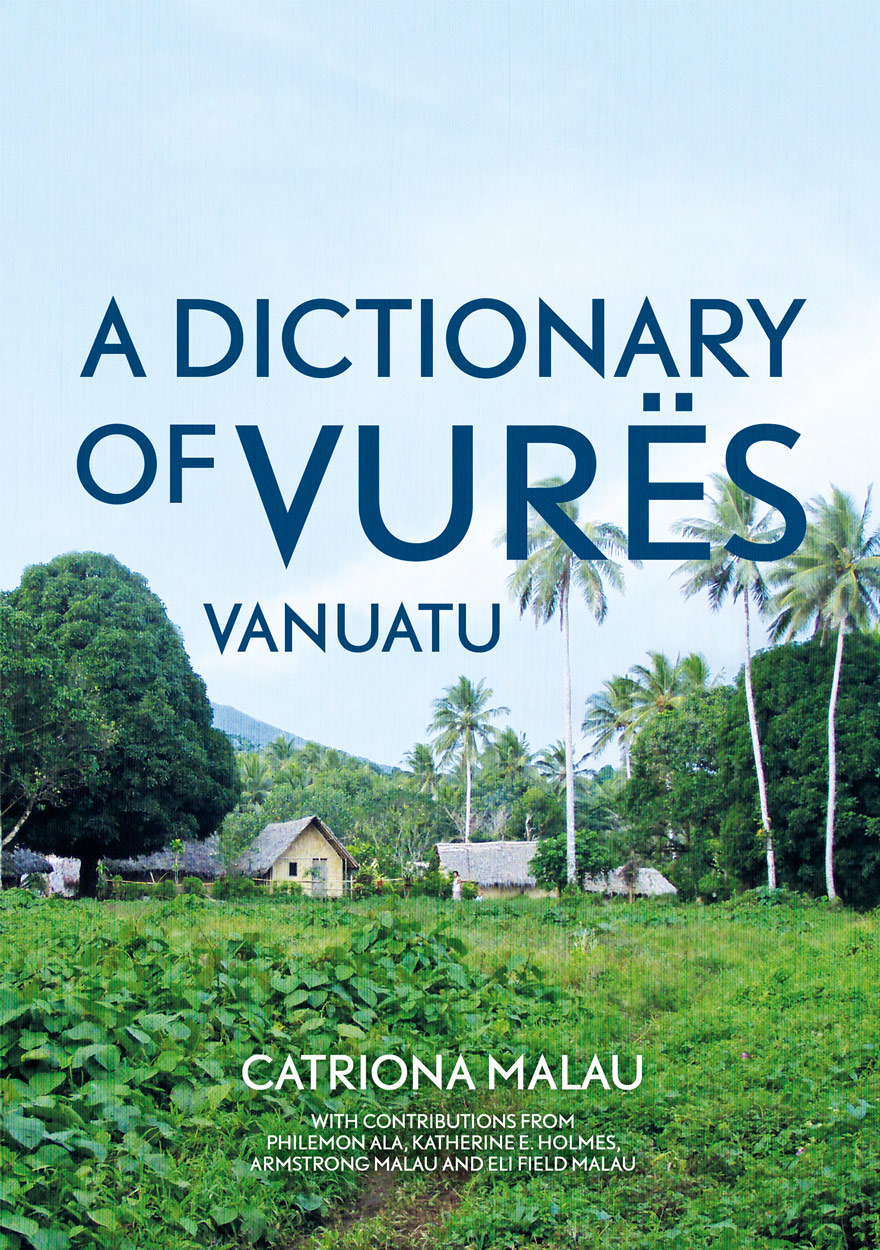
A Dictionary of Vurës, Vanuatu »
Authored by: Catriona Malau
Publication date: September 2021
This is a trilingual dictionary of Vurës, with meanings provided in both English and Bislama, the national language of Vanuatu. Vurës is an Oceanic language spoken on the island of Vanua Lava in Vanuatu. The dictionary is a companion volume to A Grammar of Vurës, Vanuatu (Malau 2016). There is no established tradition of writing in Vurës and most speakers are not literate in their own language. This dictionary is intended to have a dual purpose: to support the learning of literacy skills in the Vurës community, and as a reference work for linguists.
There are four parts to the dictionary. The main part is the most comprehensive and provides the English and Bislama definitions of Vurës words, as well as example sentences for many of the entries, additional encyclopaedic information, scientific names for identified species, lexical relations, and etymological information for some entries. The dictionary contains approximately 3,500 headwords and has a strong emphasis on flora and fauna with close to a third of the entries belonging to these semantic domains. The dictionary has benefited from collaboration with a marine biologist and botanists, who have provided scientific identifications for named species. The main dictionary is followed by English–Vurës and Bislama–Vurës finderlists. The final part of the dictionary is a thesaurus, in which Vurës words are grouped according to semantic categories. The thesaurus has been included primarily so that it can be used to support teaching of literacy skills and cultural knowledge within the community.

The Federated States of Micronesia’s Engagement with the Outside World »
Control, Self-Preservation and Continuity
Authored by: Gonzaga Puas
Publication date: September 2021
This study addresses the neglected history of the people of the Federated States of Micronesia’s (FSM) engagement with the outside world. Situated in the northwest Pacific, FSM’s strategic location has led to four colonial rulers. Histories of FSM to date have been largely written by sympathetic outsiders. Indigenous perspectives of FSM history have been largely absent from the main corpus of historical literature. A new generation of Micronesian scholars are starting to write their own history from Micronesian perspectives and using Micronesian forms of history. This book argues that Micronesians have been dealing successfully with the outside world throughout the colonial era in ways colonial authorities were often unaware of. This argument is sustained by examination of oral histories, secondary sources, interviews, field research and the personal experience of a person raised in the Mortlock Islands of Chuuk State. It reconstructs how Micronesian internal processes for social stability and mutual support endured, rather than succumbing to the different waves of colonisation. This study argues that colonisation did not destroy Micronesian cultures and identities, but that Micronesians recontextualised the changing conditions to suit their own circumstances. Their success rested on the indigenous doctrines of adaptation, assimilation and accommodation deeply rooted in the kinship doctrine of eaea fengen (sharing) and alilis fengen (assisting each other). These values pervade the Constitution of the FSM, which formally defines the modern identity of its indigenous peoples, reasserting and perpetuating Micronesian values and future continuity.
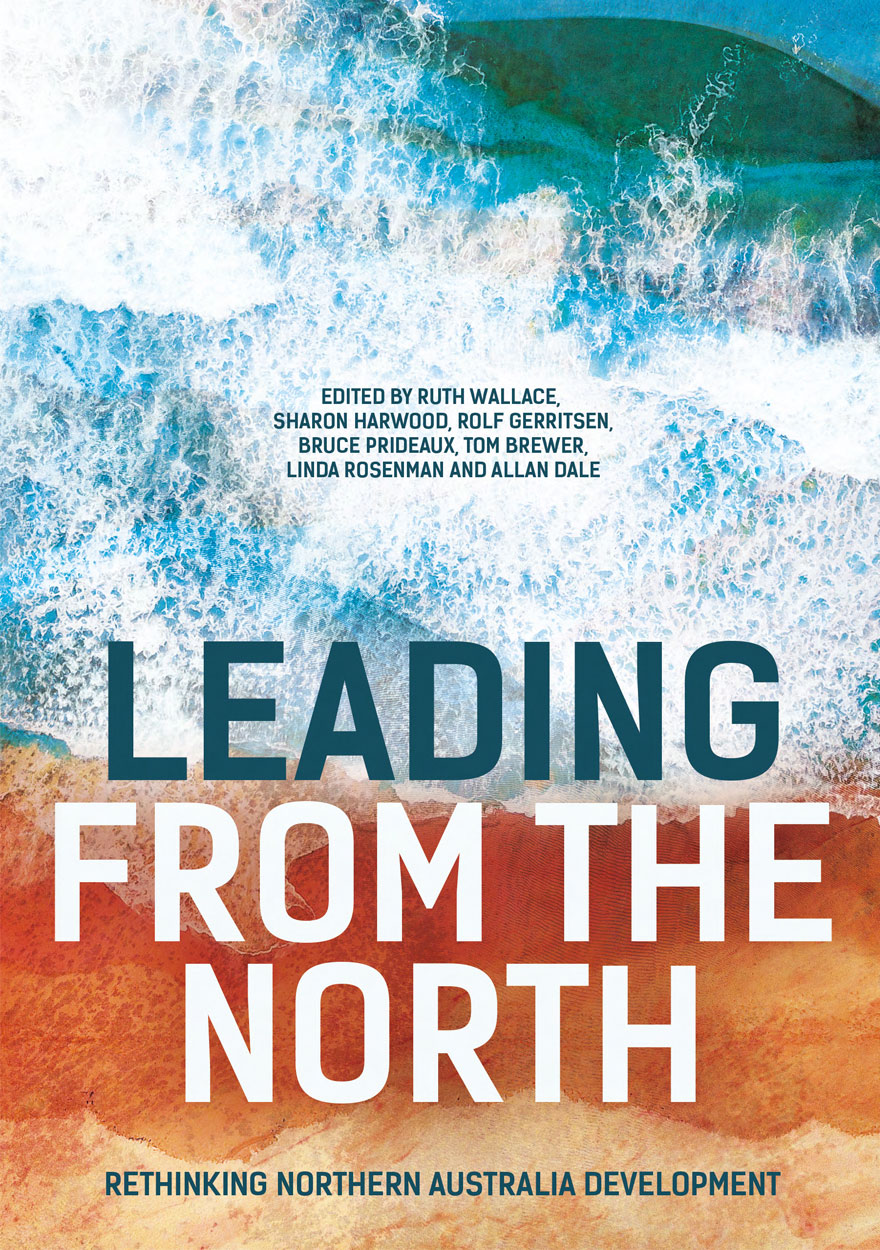
Leading from the North »
Rethinking Northern Australia Development
Edited by: Ruth Wallace, Sharon Harwood, Rolf Gerritsen, Bruce Prideaux, Tom Brewer, Linda Rosenman, Allan Dale
Publication date: September 2021
Leading from the North aims to improve public dialogue around the future of Northern Australia to underpin robust and flexible planning and policy frameworks. A number of areas are addressed including social infrastructure, governance systems, economic, business and regional development, climate and its implications, the roles and trends in demography and migration in the region.
This book not only speaks to the issues of development in Northern Australia but also other regional areas, and examines opportunities for growth with changing economies and technologies.
The authors of this book consist of leading researchers, academics and experts from Charles Darwin University, The Australian National University, James Cook University, the Australian Institute of Marine Science and many other collaborative partners.
Many of the authors have first-hand experience of living and working in Northern Australia. They understand the real issues and challenges faced by people living in Northern Australia and other similar regional areas. Backed by their expertise and experience, the authors present their discussions and findings from a local perspective.

Finding the Enemy Within »
Blasphemy Accusations and Subsequent Violence in Pakistan
Authored by: Sana Ashraf
Publication date: September 2021
In the past decade, Pakistan has witnessed incidents such as the public lynching of a student on a university campus, a Christian couple being torched alive, attacks on entire neighbourhoods by angry mobs and the assassination of a provincial governor by his own security guard over allegations of blasphemy. Finding the Enemy Within unpacks the meanings and motivations behind accusations of blasphemy and subsequent violence in Pakistan.
This is the first ethnographic study of its kind analysing the perspectives of a range of different actors including accusers, religious scholars and lawyers involved in blasphemy-related incidents in Pakistan. Bringing together anthropological perspectives on religion, violence and law, this book reworks prevalent analytical dichotomies of reason/emotion, culture/religion, traditional/Western, state/nonstate and legal/extralegal to extend our understanding of the upsurge of blasphemy-related violence in Pakistan.
Through the case study of blasphemy accusations in Pakistan, this book addresses broader questions of difference, individual and collective identities, social and symbolic boundaries, and conflict and violence in modern nation-states.
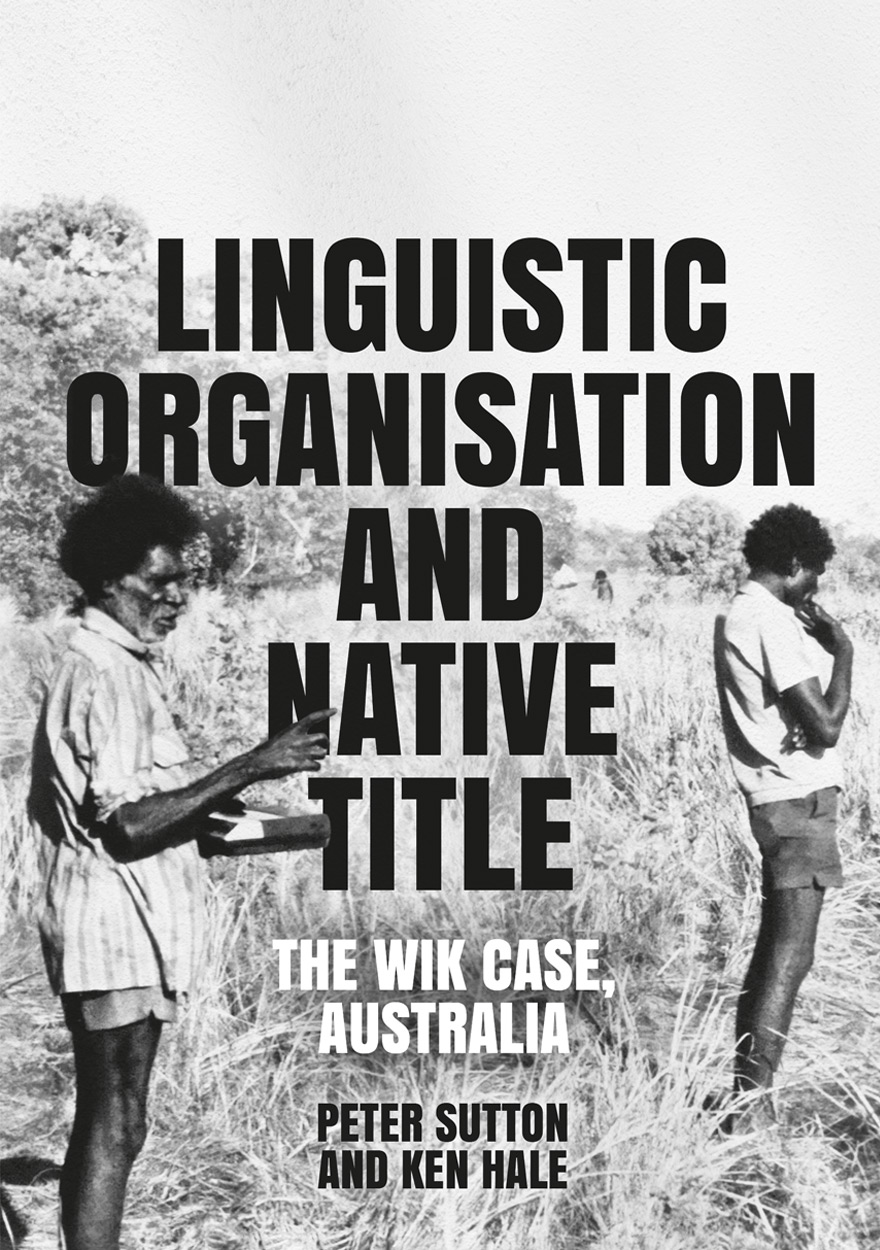
Linguistic Organisation and Native Title »
The Wik Case, Australia
Authored by: Peter Sutton, Kenneth Locke Hale
Publication date: September 2021
Classical Aboriginal societies in Australia have commonly been described in terms of social organisation and local organisation. This book presents rich detail on a third and related domain that has not been given the same kind of attention: linguistic organisation.
Basing their analyses on fieldwork among the Wik peoples of Cape York Peninsula, north Australia, Peter Sutton and Ken Hale show how cosmology, linguistic variation, language prehistory, clan totemic identities, geopolitics, land use and land ownership created a vibrant linguistic organisation in a classical Aboriginal society.
This has been a society long in love with language and languages. Its people have richly imbued the domain of rights and interests in country—the foundations of their native title as recognised in Australian law—with rights and interests in the abundance of languages and dialects given to them at the start of the world.

East Asia Forum Quarterly: Volume 13, Number 3, 2021 »
Publication date: September 2021
The 2020 Olympics put a spotlight on Japan’s crisis governance capabilities. Whether it be in the sphere of social issues, domestic political economy or foreign policy, Japan’s capacity to manage ‘slow-burn’ crises will be a primary test for the country’s policymakers and citizens alike in coming years. This edition of East Asian Forum Quarterly looks at these challenges, including the COVID-19 pandemic, digital governance, women’s rights in the #MeToo era, foreign policy, natural disaster response and tone-party control of Japan’s government.
Download for free
Not available for purchase

China’s Challenges in Moving towards a High-income Economy »
Edited by: Ligang Song, Yixiao Zhou
Publication date: September 2021
With its per capita income surpassing US$10,000, China has now drawn up ambitious plans to further lift its income to the level of developed countries. Yet various constraints need to be overcome if China is to build on the achievements of the last 40 years and further boost its growth potential. Besides these constraints, the year 2020 saw human societies hit heavily by the COVID-19 pandemic and the global economy caught off guard and dipped into recessions caused by lockdown measures for controlling the spread of the pandemic. Nations around the world have experienced grave loss of human life and lockdown measures have knocked economies from their normal growth trajectories. Even as the pandemic continues to unfold, all signs point to China as being the first major economy to have emerged out of the crisis. But many questions remain. Has the Chinese economy emerged from the pandemic crisis relatively unscathed? What are the long-term prospects for its economy? This year’s Update book, China’s Challenges in Moving towards a High-income Economy, explores the challenges faced by the Chinese economy in the transition towards a high-income economy, including agricultural development, finance and fiscal system reform, RMB internationalisation, trends in urbanisation, as well as topics related to innovation, corporate sector development and market competition. China’s growth experience has been full of exciting changes and important lessons for reform and structural changes, and this year’s China Update is again the way to gain insights into these.

Creative Frictions »
Arts Leadership, Policy and Practice in Multicultural Australia
Authored by: Cecelia Cmielewski
Publication date: August 2021
Creative Frictions explores the relationship between visionary aspects of practice and policy. Despite over 30 years of arts and cultural policy attention, there remains a widespread view among the general public and artists alike that creative production does not reflect Australia’s culturally diverse population. Australia’s increasingly complex society can no longer be confined to ‘essentialised’ or traditional definitions of ethnic communities. While this diversity and its emerging complexity can be ‘celebrated’ as a source of creativity and innovation, it can also give rise to social, political and creative challenges. A key challenge that remains for the arts sector is its ability to support the creative expression of cultural difference. One measure of inclusive creative production is to look at the participation of artists of non–English speaking backgrounds (NESBs)—a problematic term discussed in the book. There are half as many NESB artists compared to those of other professions participating in the workforce, and while under-representation is an issue for management in the arts sector, the question of representation also benefits from being understood more broadly beyond the narrow sense of multiculturalism as a tool to manage cultural difference. This book explores the crucial role of creative leaders and how they work with the ‘mainstream’ while maintaining their creative integrity and independence to generate a ‘virtuous’ circle of change. Creative Frictions argues that it is the NESB artists who lead change in the arts sector and that creative and organisational leadership working in partnership make creative use of ‘friction’ and develop the necessary ‘trust’ to generate the ‘traction’ for a supportive multicultural arts milieu.

Australian Journal of Biography and History: No. 5, 2021 »
Publication date: August 2021
This special issue of the Australian Journal of Biography and History focuses on political biography. The 10 peer-reviewed articles and review essays collectively demonstrate that political biography is growing beyond just ‘one damned life after another’, and that there are new and productive paths open for practitioners, readers and critics of this genre. They offer a critical snapshot of the diverse approaches and attitudes to political biography in contemporary Australia.
Forty years after her first critical examination of the state of political biography in Australia, Kate White makes a bold call for academics to ‘rethink their approach’ by considering novel strategies to ‘move beyond the narrative form’. Blair Williams demonstrates that although increasing numbers of women are writing and practising political biography, there remain few good examples of feminist political biography; more can be done to develop a framework for feminist political biography in Australia. Joshua Black examines the political memoir and diary genres in the broader context of the rise of life writing in the twentieth century, adopting former minister Neal Blewett’s A Cabinet Diary (1999) as a case study. In a sweeping examination of prime ministerial portraiture, Sarah Engledow reconsiders the visual performance of leadership for posterity and, ultimately, questions the biographical utility of such performances. Daniel Oakman delineates the links that politics has to mainstream Australian life via that great staple of popular culture, sport. Chris Wallace in her account of a quietly controversial and eventually abandoned biography of Robert Menzies early in his second prime ministership demonstrates that life stories are powerful but risky commodities in the fast-changing political domain. Similarly, in a methodological reflection on his award-winning biography Tiberius with a Telephone, Patrick Mullins critically explores the concerted attempts of the former prime minister to control and manipulate the public and archival record of his life.
Robert Tickner, the only contributor who was also an elected political practitioner, uses his very personal article to call on others to write political and policy memoirs as a ‘public good’ that helps to encourage the ‘noble enterprise’ of participation in public life. In his analysis of backbencher memoirs, Stephen Wilks calls for more of the foot soldiers of politics—backbenchers, humble and otherwise—to write memoirs as an insight into the working lives of the typical politician, and to explore what wider significance they have as political players. And Tim Rowse and Murray Goot indicate in a powerful review essay that critically examines Warren Mundine’s political memoir In Black + White, political life narratives are implicated in the difficult postcolonial politics of race, representation and recognition.
Download for free
Not available for purchase

The Absent Presence of the State in Large-Scale Resource Extraction Projects »
Edited by: Nicholas A. Bainton, Emilia E. Skrzypek
Publication date: August 2021
Standing on the broken ground of resource extraction settings, the state is sometimes like a chimera: its appearance and intentions are misleading and, for some actors, it is unknowable and incomprehensible. It may be easily mistaken for someone or something else, like a mining company, for example.
With rich ethnographic material, this volume tackles critical questions about the nature of contemporary states, studied from the perspective of resource extraction projects in Papua New Guinea, Australia and beyond. It brings together a sustained focus on the unstable and often dialectical relationship between the presence and the absence of the state in the context of resource extraction. Across the chapters, contributors discuss cases of proposed mining ventures, existing large-scale mining operations and the extraction of natural gas. Together, they illustrate how the concept of absent presence can be brought to life and how it can enhance our understanding of the state as well as relations and processes forming in extractive contexts, thus providing a novel contribution to the anthropology of the state and the anthropology of extraction.
‘The Absent Presence fills a major gap in our knowledge about the relationship between states and companies – at a time when resource extraction seems to be more contested than ever. Bainton and Skrzypek have curated an incredibly impressive volume that should be read by all those interested in exploring corporate and state power, and the ever-present impacts of extraction. A highly recommended read.’
— Professor Deanna Kemp, Director of the Centre for Social Responsibility in Mining, The University of Queensland
‘Countless books have been written on the sovereign state and how it imposes a particular kind of order on economic and social interactions. What is original and compelling about this collection is the portrait of how two very different states converge when it comes to “extractive ventures”. From the presumption of exclusive sovereignty over mineral resources, to the bargains that are struck with major (often global) corporations, and the relative indifference to environmental impacts, there is a remarkable consistency in the patterns that are referred to as “state effects”. These effects are brought from the background to the foreground in this book through the blending of creative and critical thinking with detailed empirical research.’
— Tim Dunne, Pro-Vice-Chancellor and Professor of International Relations, The University of Queensland
‘This brilliant and intriguing title provides a timely contribution to understanding the actual functions and strategies of state (and state-like) institutions in resource arenas. The dialectics of presence-absence and its refractions at different levels and scales of government allow the authors to go beyond stereotypes about the (strong, weak, failed or corrupt) state, highlighting more commonalities than expected between Papua New Guinea and Australia, and even New Caledonia.’
— Dr Pierre-Yves Le Meur, Anthropologist, Senior Researcher, French National Research Institute for Sustainable Development, Joint Research Unit SENS (Knowledge Environment Society)

Human Ecology Review: Volume 26, Number 2 »
Publication date: July 2021
This volume is a special issue on ‘Generating Sustainability-Supporting Knowledge on Social Networks in the Governance and Management of Social–Ecological Systems’, compiled by guest editors Marion Glaser and Barbara Schröter. The collection of papers demonstrates the capacity of social network analysis to contribute to understanding the interactions of actors and institutions. María García and Örjan Bodin set out to differentiate to what extent power resides within network structures and whether it is rooted in actor attributes such as class and wealth. Marco Scotti, Daniel Pereira, and Antonio Bodini present loop analysis as a qualitative tool for linking disciplinary domains in integrated analyses of the natural and social science variables. Marina Corrêa and her co-authors examine the role and potential of public sector managers for advancing the ecosystem service-oriented management of the social–ecological systems. Philipp Gorris and Marion Glaser focus on the information transmission capacity and the robustness of actor networks in different approaches to collaborative governance of coastal and marine natural resources. Theresa Schwenke and Eike Holzkämper present a bibliometric analysis of publications that address both environmental governance and social (–ecological) network analysis. Ben Nagel presents a coastal case study from Bangladesh, one of the countries most vulnerable to climate change. The collection is rounded out by Adam Henry, who focuses on sustainability learning at the organisational level, addressing to what extent an organisation’s position in a larger environmental policy network determines learning outcomes.
Download for free
Not available for purchase

Island Encounters »
Timor-Leste from the outside in
Authored by: Lisa Palmer
Publication date: July 2021
Island Encounters is a narrative of Timor shaped by a journey from the outside in. Incorporating the author’s experiences from more than two decades of involvement with Timor-Leste and, more particularly, the months she spent travelling with her family from west to east in 2018, Palmer traces paths redolent in longing and learning, belonging and bewilderment, courage and conviction to tell of an island divided by colonialism and conflict.
The book’s themes shuttle back and forth across the island, weaving together the past, present and future in deeply felt histories and personal stories that create the shared fabric of Timorese people’s lives. Offering a counterpoint to modernising development narratives, Island Encounters tells of people’s quiet determination to maintain their relationships between their lands, waters, traditions and each other.
By foregrounding the ways in which ancestral pathways and cultural politics inform and course through everyday life on island Timor, Palmer reveals the richness of the rituals and customary practices that underpin Timorese lives and the lives of those entwined with them. And, all along the way, Island Encounters shows how Timor and its diverse peoples are working with, and re-working, confounding and being confounded by, the ever-desirous heart of development.
‘A poignant, at times heart-wrenching, honest account of life in Timor-Leste.’
— José Ramos-Horta
‘Island Encounters is a shimmery blend of anthropology, memoir and reportage. Palmer journeys her way across the island of Timor and uncovers human stories of pasts not yet passed and of an uncertain present. Island Encounters will be the definitive contemporary explainer of why things work the way they do on both sides of the border, in West Timor and Timor-Leste. Not only is Palmer a deeply knowledgeable scholar, she is an absolute dream of a writer.’
— Gordon Peake, author of Beloved Land: Stories, Struggles, and Secrets from Timor-Leste
‘Palmer is the best kind of insider-outsider to translate a culture from the inside so outsiders can understand. Living with Timorese family, Palmer has had access to levels of cultural knowledge not usually shared with outsiders and she takes readers on a journey into the Timorese psyche. Island Encounters is a great intellectual gift to everyone wanting to better understand the complex new nation of Timor-Leste.’
— Sara Niner, author of Xanana: Leader of the Struggle for Independent Timor-Leste
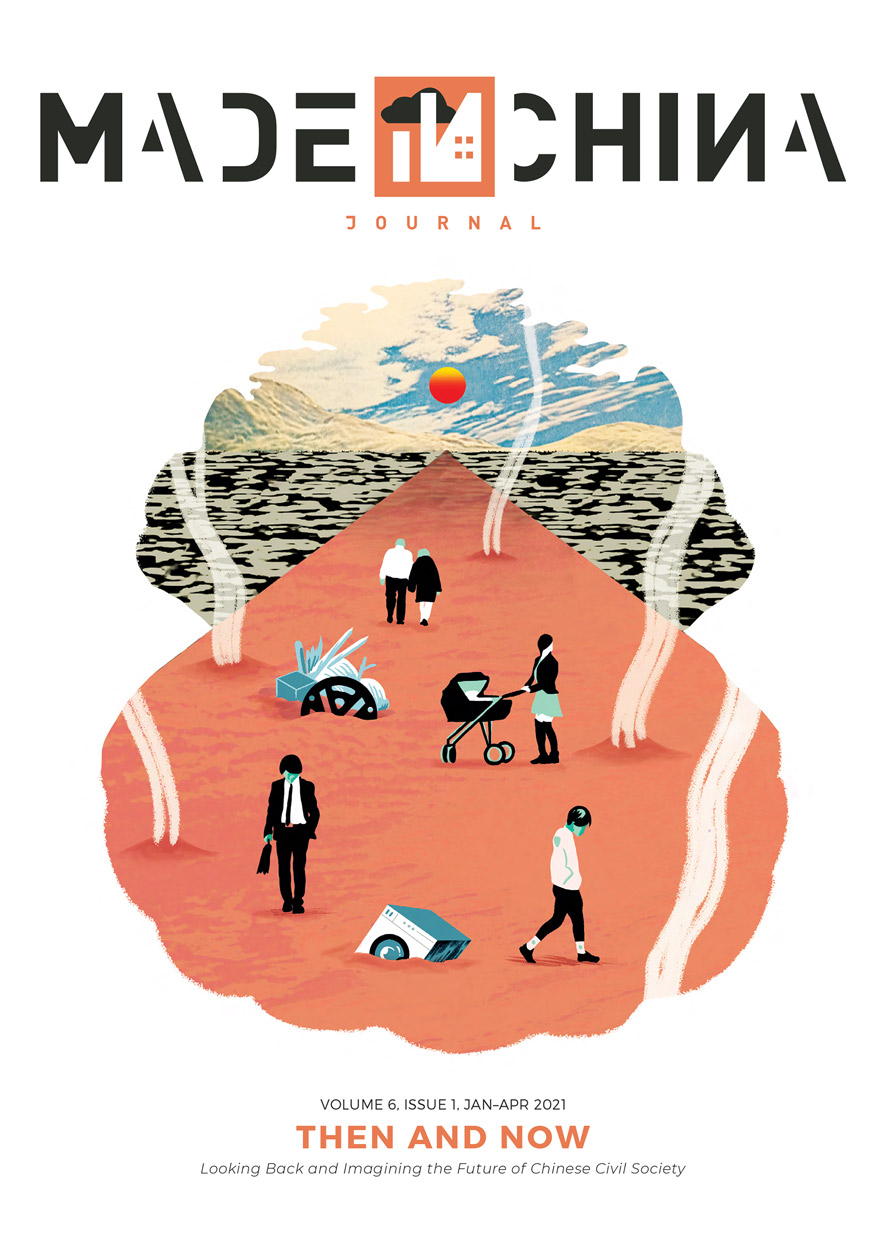
Made in China Journal: Volume 6, Issue 1, 2021 »
Edited by: Ivan Franceschini, Nicholas Loubere
Publication date: July 2021
In the spring of 2021, China’s central authorities issued a policy that seeks to change norms of China’s civil society that have been established over the past 30 years. At a moment that portends a closing of space for unregistered NGOs and a possible shift in the ways NGOs can emerge, evolve and cooperate with other social and state entities, we thought it important to look back to revisit the development of China’s civil society over the past decades. Not only is this exercise important in enabling us to understand the shifts now taking place, but it also reminds us of the possibilities that once were, and the possible futures that may be. With this issue we wanted to bring together practitioners, whose experience of running or participating in organisations and initiatives is invaluable both in and of itself, but also in helping us to reflect. We sought to bring their insights together with those of scholars who also have a deep interest, and often practical experience, in China’s organised civil society, studying its different aspects and dynamics. We hoped, too, to capture something of the vibrant diversity of organised civil society during its early (re-)emergence in the 1990s and to remember, as best we could, some of the early pioneers and possibilities.
Download for free
Not available for purchase

Indigenous Australian Youth Futures »
Living the Social Determinants of Health
Publication date: July 2021
Adolescents are at a critical life stage where they will soon be able to contribute to the wellbeing of humankind, or do it great harm. Consequently, it is vital that the challenges and possibilities of adolescence be well understood and addressed. In Australia, such understanding is urgently needed with respect to Aboriginal adolescents. Not only must they adjust to their changing bodies and minds, but they must negotiate these changes within a context usually characterised by racism and poverty. They must also do this within intercultural environments that include the disparate and sometimes incompatible beliefs and practices of their multicultural populations. The chapters in this collection address these challenges to Aboriginal adolescents in the Northern Territory and the intercultural contexts in which they take place. Their discussions include the adolescents’ experiences with health and health care, education, and the criminal justice system. They also address their hopes, dreams, plans and politics, engagement with social media, food preferences and nutrition, engagement with language, family, and changing mores affecting sexual behaviour and marriage.
The book aims to provide readers with a greater understanding of the day-to-day lives of Aboriginal adolescents, and some of the adults who care for or neglect them. It seeks to provide readers with a better understanding of the circumstances, processes and factors that affect adolescent health, wellbeing and future prospects in their intercultural environments, and glimpse the multiplicity of these circumstances, processes and factors and the complexity of their interaction.

Like Fire »
The Paliau Movement and Millenarianism in Melanesia
Authored by: Theodore Schwartz, Michael French Smith
Publication date: July 2021
‘Like Fire consummates remarkable longitudinal ethnographic research on the Paliau Movement in Papua New Guinea, pursued from the 1950s into the 1990s by Theodore Schwartz, with Michael French Smith as his sometime assistant, and updated by Smith in 2015. The theoretical arguments are highly provocative and the book is well written and fascinating throughout. Like Fire poses important questions about the driving forces and contours of Pacific Island history and the place in it of cargo cults and other millenarian movements.’
—Aletta Biersack, Professor Emerita, University of Oregon
‘Like Fire synthesises old, but inaccessible, and new material on an important and long-lasting indigenous Melanesian movement, while making extensive use of the wider literature on cargo cults and millenarianism. I find the theorising in this book both very original and an important contribution to the debates on Melanesian religion, cargo cults, and millenarianism more generally. As the authors state, the topic of millenarianism has great relevance because of its ubiquity in the contemporary world.’
—Ton Otto, Professor of Anthropology, Aarhus University, Denmark, and James Cook University, Australia
Like Fire chronicles an indigenous movement for radical change in Papua New Guinea from 1946 to the present. The movement’s founder, Paliau Maloat, promoted a program for step-by-step social change in which many of his followers also found hope for a miraculous millenarian transformation. Drawing on data collected over several decades, Theodore Schwartz and Michael French Smith describe the movement’s history, Paliau’s transformation from secular reformer and politician to Melanesian Jesus, and the development of the current incarnation of the movement as Wind Nation, a fully millenarian endeavour. Their analysis casts doubt on common ways of understanding a characteristically Melanesian form of millenarianism, the cargo cult, and questions widely accepted ways of interpreting millenarianism in general. They show that to understand the human proclivity for millenarianism we must scrutinise more closely two near-universal human tendencies: difficulty accepting the role of chance or impersonal forces in shaping events (that is, the tendency to personify causation), and a tendency to imagine that one or one’s group is the focus of the malign or benign attention of purposeful entities, from the local to the cosmic. Schwartz and Smith discuss the prevalence of millenarianism and warn against romanticising it, because the millenarian mind can subvert rationality and nourish rage and fear even as it seeks transcendence.
ANU Press Journals
Aboriginal History Journal »
Since 1977, the journal Aboriginal History has pioneered interdisciplinary historical studies of Australian Aboriginal people’s and Torres Strait Islander’s interactions with non-Indigenous peoples. It has promoted publication of Indigenous oral traditions, biographies, languages, archival and bibliographic guides, previously unpublished manuscript accounts, critiques of current events, and research and reviews in the fields of anthropology, archaeology, sociology, linguistics, demography, law, geography and cultural, political and economic history.
Aboriginal History Inc. is a publishing organisation based in the Australian Centre for Indigenous History, Research School of Social Sciences, The Australian National University, Canberra.
For more information on Aboriginal History Inc. please visit aboriginalhistory.org.au.
Submission details
Please send article submissions to aboriginal.history@anu.edu.au.
Articles of about 7,000 words in length (including footnotes and references) are preferred, but submissions up to 9,000 words will be considered. Please submit an electronic version of the paper (text only without embedded images or scans) in Microsoft Word or RTF format, along with a short abstract and author biography as a separate document.
ANU Historical Journal II »
The ANU Historical Journal II (ANUHJ II) is an open-access, peer-reviewed academic history journal of the ANU College of Arts and Social Sciences and the ANU College of Asia and the Pacific. It is a revival of the ANU Historical Journal, which was published between 1964 and 1987. Contributors to the first journal included academics such as Ken Inglis, Manning Clark, John Ritchie and Oliver MacDonagh along with then-emerging scholars Iain McCalman, Michael McKernan, Margaret George, Coral Bell, John Iremonger, Alastair Davidson, Susan Magarey and Rosemary Auchmuty. As well as upholding the Journal’s commitment to the work of students and early career researchers, the ANUHJ II has expanded its focus to include memoirs, short articles and long-form book reviews.
The ANUHJ II invites submissions from students, graduates and academics of any Australian university.
For more information about the ANUHJ II, please visit anuhj.com.au
Australian Journal of Biography and History »
The Australian Journal of Biography and History is an initiative of the National Centre of Biography (NCB) in the Research School of Social Sciences at The Australian National University. The NCB was established in 2008 to extend the work of the Australian Dictionary of Biography and to serve as a focus for the study of life writing in Australia, supporting innovative research and writing to the highest standards in the field, nationally and internationally. The Australian Journal of Biography and History seeks to promote the study of biography in Australia. Articles that appear in the journal are lively, engaging and provocative, and are intended to appeal to the current popular and scholarly interest in biography, memoir and autobiography. They recount interesting and telling life stories and engage critically with issues and problems in historiography and life writing.
The journal publishes peer-reviewed articles on Australian historical biography, including biographical studies, studies relating to theory and methodology, and the associated genres of autobiography, life writing, memoir, collective biography and prosopography. We are especially interested in articles that explore the way in which biography and its associated genres can illuminate themes in Australian history, including women in Australian society, family history, transnational networks and mobilities, and Indigenous history.
Submission Details
Please send article submissions or abstracts to the Editor, Dr Malcolm Allbrook, National Centre of Biography, The Australian National University. Email: Malcolm.Allbrook@anu.edu.au. Articles should be in the range of 5,000 to 8,000 words (excluding footnotes), although longer submissions may be considered after consultation with the Editor. Style and referencing: please use footnotes in Chicago style, and follow British spelling.
East Asia Forum Quarterly »
East Asia Forum Quarterly grew out of East Asia Forum (EAF) online, which has developed a reputation for providing a platform for the best in Asian analysis, research and policy comment on the Asia Pacific region in world affairs. EAFQ aims to provide a further window onto research in the leading research institutes in Asia and to provide expert comment on current developments within the region. The East Asia Forum Quarterly, like East Asia Forum online, is an initiative of the East Asia Forum (EAF) and its host organisation, the East Asian Bureau of Economic Research (EABER) in the Crawford School of Public Policy in the ANU College of Asia & the Pacific at The Australian National University.
Submission details
Unsolicited submissions to EAF are welcome. An analytic op-ed piece that is accessible to a general audience and written in crisp language is required. The preferred length of submissions is around 800 words. Submissions will be double-blind reviewed and, if accepted for publication, edited for English fluency and house style before returned for clearance by the author. EAFQ does not use footnotes but would be extremely appreciative if hyperlinks to internet sources are included wherever possible. EAFQ reserves the right to determine the title for any piece, but will not publish a piece or a title without permission. A suggested title is appreciated. If you have any further queries, or would like to submit, please contact shiro.armstrong@anu.edu.au.
Human Ecology Review »
Human Ecology Review is a semi-annual journal that publishes peer-reviewed interdisciplinary research on all aspects of human–environment interactions (Research in Human Ecology). The journal also publishes essays, discussion papers, dialogue, and commentary on special topics relevant to human ecology (Human Ecology Forum), book reviews (Contemporary Human Ecology), and letters, announcements, and other items of interest (Human Ecology Bulletin). Human Ecology Review also publishes an occasional paper series in the Philosophy of Human Ecology and Social–Environmental Sustainability.
Submission details
For information on preparing your manuscript for submission, please visit www.humanecologyreview.org. To submit a manuscript to Human Ecology Review, please visit mstracker.com/submit1.php?jc=her, or email humanecologyreviewjournal@gmail.com.
Humanities Research »
Humanities Research is a peer-reviewed, open access, annual journal that promotes outstanding innovative, interdisciplinary and multidisciplinary scholarship to advance critical knowledge about the human world and society.
The journal is co-published by the Humanities Research Centre, The Australian National University, Canberra. It was launched in 1997 and went into hiatus in 2013. In 2022, the journal is resuming publication, reflecting the continuing strength of the humanities at The Australian National University, the rapid development of the interdisciplinary, environmental and public humanities over the last decade, and the opportunities for international collaboration reflected in the resumption of international travel in 2022.
Issues are thematic with guest editors and address important and timely topics across all branches of the humanities.
International Review of Environmental History »
International Review of Environmental History takes an interdisciplinary and global approach to environmental history. It encourages scholars to think big and to tackle the challenges of writing environmental histories across different methodologies, nations, and time-scales. The journal embraces interdisciplinary, comparative and transnational methods, while still recognising the importance of locality in understanding these global processes.
The journal’s goal is to be read across disciplines, not just within history. It publishes on all thematic and geographic topics of environmental history, but especially encourage articles with perspectives focused on or developed from the southern hemisphere and the ‘global south’.
Submission details
Please send article submissions or abstracts to the Editor, Associate Professor James Beattie, Science in Society, Victoria University of Wellington, PO Box 600, Wellington 6142, New Zealand. Email: james.beattie@vuw.ac.nz.
Abstracts should be no more than 200 words, and include a list of keywords. Articles should be in the range 5,000 to 8,000 words (including footnotes), although longer submissions may be considered after consultation with the editor. Style and referencing: please use footnotes in Chicago Style, follow British spelling, and use single quotation marks only. Find out more details about Chicago Style.
Lilith: A Feminist History Journal »
Lilith: A Feminist History Journal is an annual journal that publishes articles, essays and reviews in all areas of feminist and gender history (not limited to any particular region or time period). In addition to publishing research articles on diverse aspects of gender history, Lilith is also interested in publishing feminist historiographical and methodological essays (which may be shorter in length than typical research articles). Submissions from Australian and international early career researchers and postgraduate students are particularly encouraged.
The journal first began publication in Melbourne in 1984. It is the official journal of the Australian Women’s History Network, an organisation dedicated to promoting research and writing in all fields of women’s, feminist and gender history.
For more information about Lilith, please visit www.auswhn.org.au/lilith/.
Made in China Journal »
The Made in China Journal (MIC) is a publication focusing on labour, civil society and human rights in China. It is founded on the belief that spreading awareness of the complexities and nuances underpinning socioeconomic change in contemporary Chinese society is important, especially considering how in today’s globalised world Chinese labour issues have reverberations that go well beyond national borders. MIC rests on two pillars: the conviction that today, more than ever, it is necessary to bridge the gap between the scholarly community and the general public, and the related belief that open-access publishing is necessary to ethically reappropriate academic research from commercial publishers who restrict the free circulation of ideas.
Discontinued ANU Press Journals
Agenda - A Journal of Policy Analysis and Reform »
Please note: This journal ceased publishing in 2021.
Agenda is a refereed, ECONLIT-indexed and RePEc-listed journal of the College of Business and Economics, The Australian National University. Launched in 1994, Agenda provides a forum for debate on public policy, mainly (but not exclusively) in Australia and New Zealand. It deals largely with economic issues but gives space to social and legal policy and also to the moral and philosophical foundations and implications of policy.
Submission details
Authors are invited to submit articles, notes or book reviews, but are encouraged to discuss their ideas with the Editor beforehand. All manuscripts are subject to a refereeing process. Manuscripts and editorial correspondence should be emailed to: william.coleman@anu.edu.au.
Subscribe to the Agenda Alerting service if you wish to be advised on forthcoming or new issues.
Australian Humanities Review »
Please note: This journal ceased publishing with ANU Press in 2012. Current issues are available at australianhumanitiesreview.org.
Australian Humanities Review is a peer-reviewed interdisciplinary journal featuring articles, essays and reviews focusing on a wide array of topics related to literature, culture, history and politics.
craft + design enquiry »
Please note: This journal ceased publishing in 2015.
craft + design enquiry is an open-access, peer-reviewed journal promoting and disseminating research excellence generated by and about the craft and design sector. craft + design enquiry investigates the contribution that contemporary craft and design makes to society, establishing a dialogue between craft and design practice and cultural, social and environmental concerns. It includes submissions from across the field of craft and design from artists and practitioners, curators, historians, art and cultural theorists, educationalists, museum professionals, philosophers, scientists and others with a stake in the future developments of craft and design.
ANU Student Journals
ANU Undergraduate Research Journal »
Please note: This journal is now published via the ANU Student Journals platform; the latest issues can be found here: studentjournals.anu.edu.au/index.php/aurj
The ANU Undergraduate Research Journal presents outstanding essays taken from ANU undergraduate essay submissions. The breadth and depth of the articles chosen for publication by the editorial team and reviewed by leading ANU academics demonstrates the quality and research potential of the undergraduate talent being nurtured at ANU across a diverse range of fields.
Established in 2008, AURJ was designed to give students a unique opportunity to publish their undergraduate work; it is a peer-reviewed journal managed by a team of postgraduate student editors, with guidance from the staff of the Office of the Dean of Students.
Burgmann Journal - Research Debate Opinion »
Please note: This journal is now published via the ANU Student Journals platform; the latest issues can be found here: studentjournals.anu.edu.au/index.php/burgmann
Burgmann Journal is an interdisciplinary, peer-reviewed publication of collected works of research, debate and opinion from residents and alumni of Burgmann College designed to engage and stimulate the wider community.
Cross-sections, The Bruce Hall Academic Journal »
Please note: This journal is now published via the ANU Student Journals platform; the latest issues can be found here: studentjournals.anu.edu.au/index.php/cs
Representing the combined energies of a large group of authors, editors, artists and researchers associated with Bruce Hall at the ANU, Cross-sections collects a range of works (from academic articles and essays to photography, digital art and installation artwork) that represents the disciplinary breadth and artistic vitality of the ANU.
Presenting a challenging and absorbing way for students to hone vital research skills, in the process, Cross-sections nurtures a fruitful environment of collaborative interaction between academics and students.
Medical Student Journal of Australia »
Please note: This journal ceased publishing in 2015.
The Medical Student Journal of Australia provides the medical school of The Australian National University with a platform for medical students to publish their work in a peer-reviewed journal, communicating the results of medical and health research information clearly, accurately and with appropriate discussion of any limitations or potential bias.
Merici - Ursula Hall Academic Journal »
Please note: This journal is currently not publishing any new issues.
Merici is the combined works of undergraduate authors at Ursula Hall. Merici contains research and analysis from a range of disciplines and is thoroughly reviewed by ANU academics to ensure the showcasing of the best Ursula Hall has to offer.
The Human Voyage: Undergraduate Research in Biological Anthropology »
Please note: This journal is now published via the ANU Student Journals platform; the latest issues can be found here: studentjournals.anu.edu.au/index.php/hv
The Human Voyage: Undergraduate Research in Biological Anthropology is a journal that publishes outstanding student articles in all areas of biological anthropology, including primatology, palaeoanthropology, bioarchaeology and human behavioural ecology.
While the primary goal of this journal is to publish work of the highest quality authored by undergraduate students, it will also educate students in regards to publishing in academia. All submissions will be peer-reviewed and edited by ANU academic staff.




